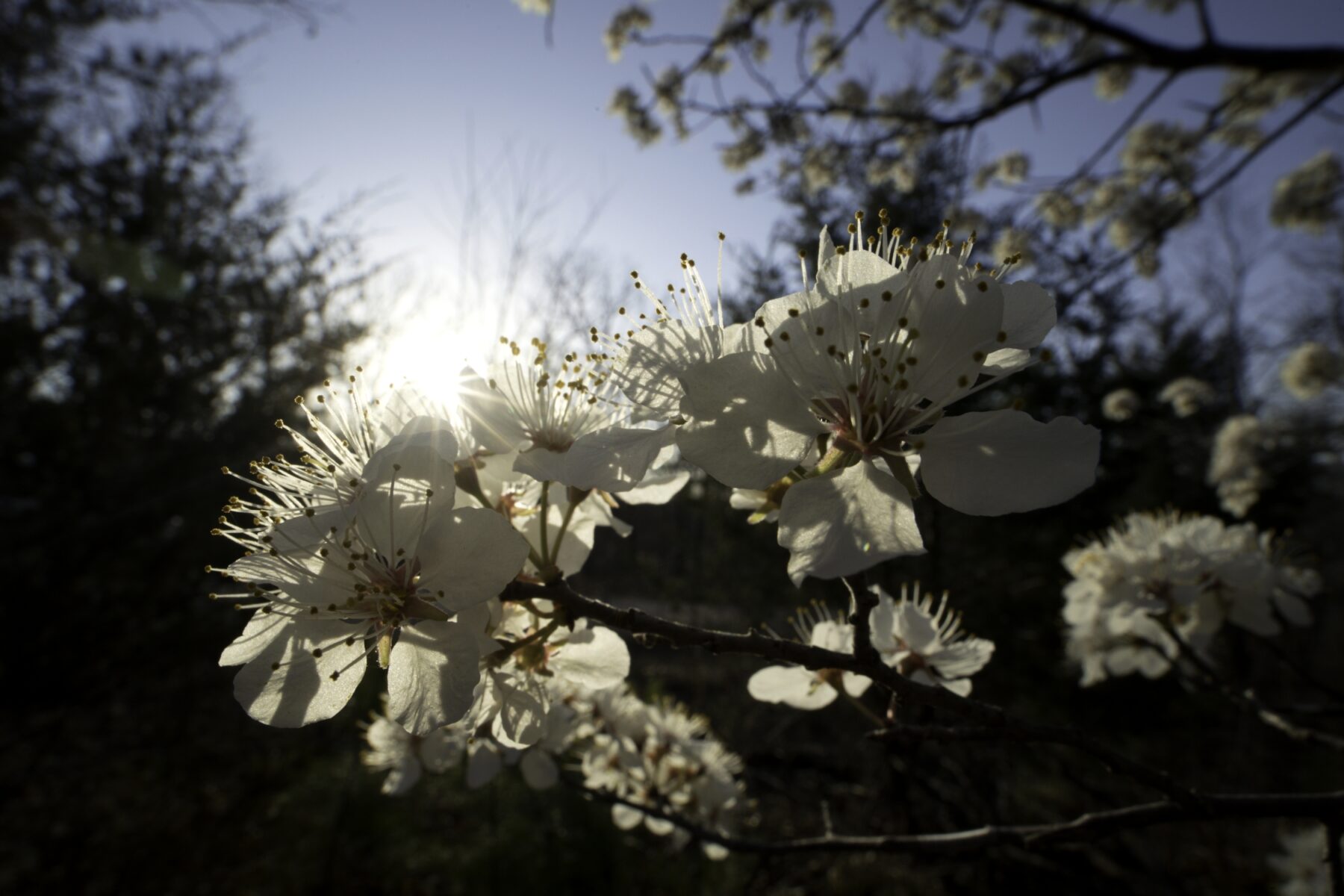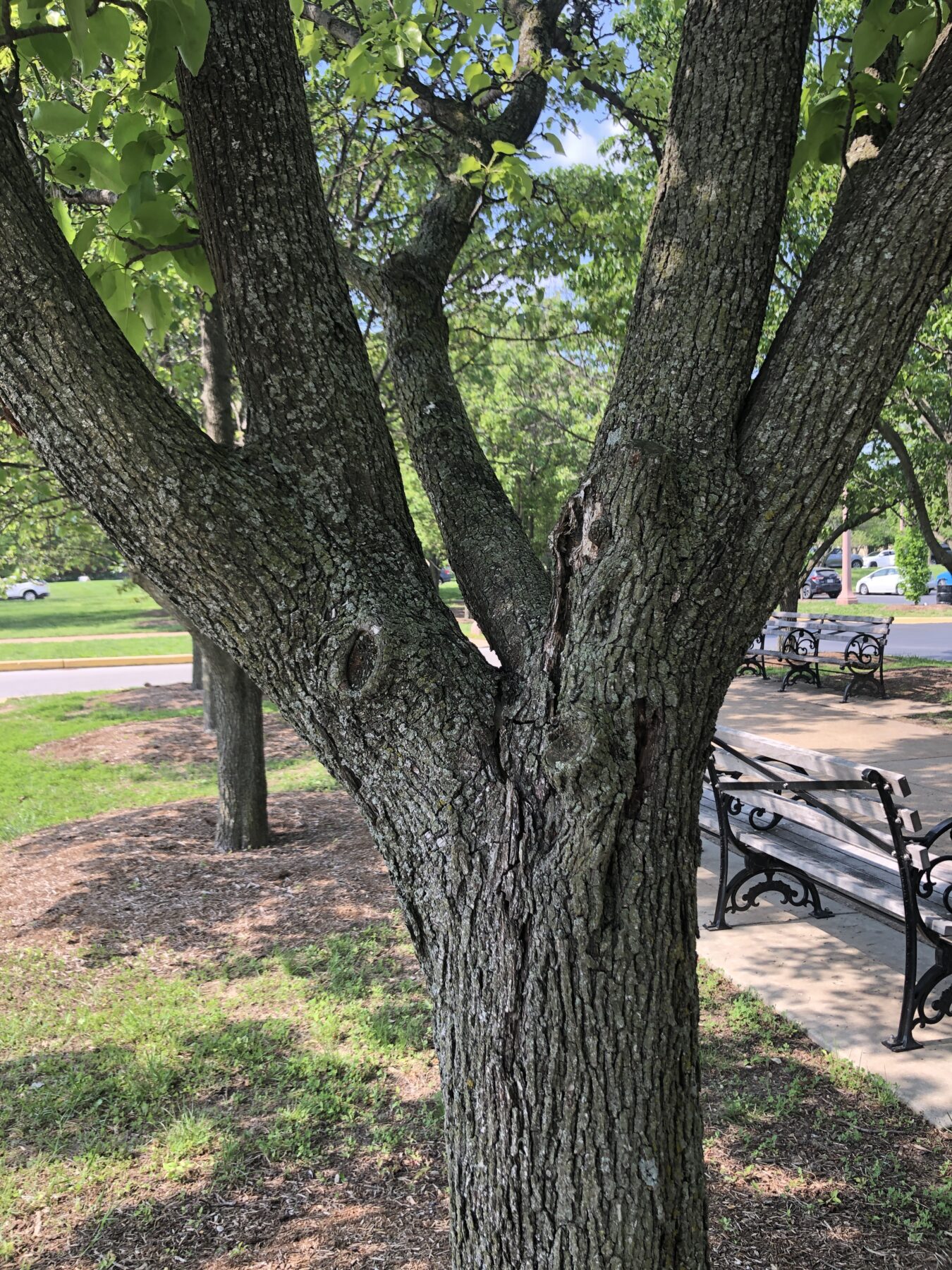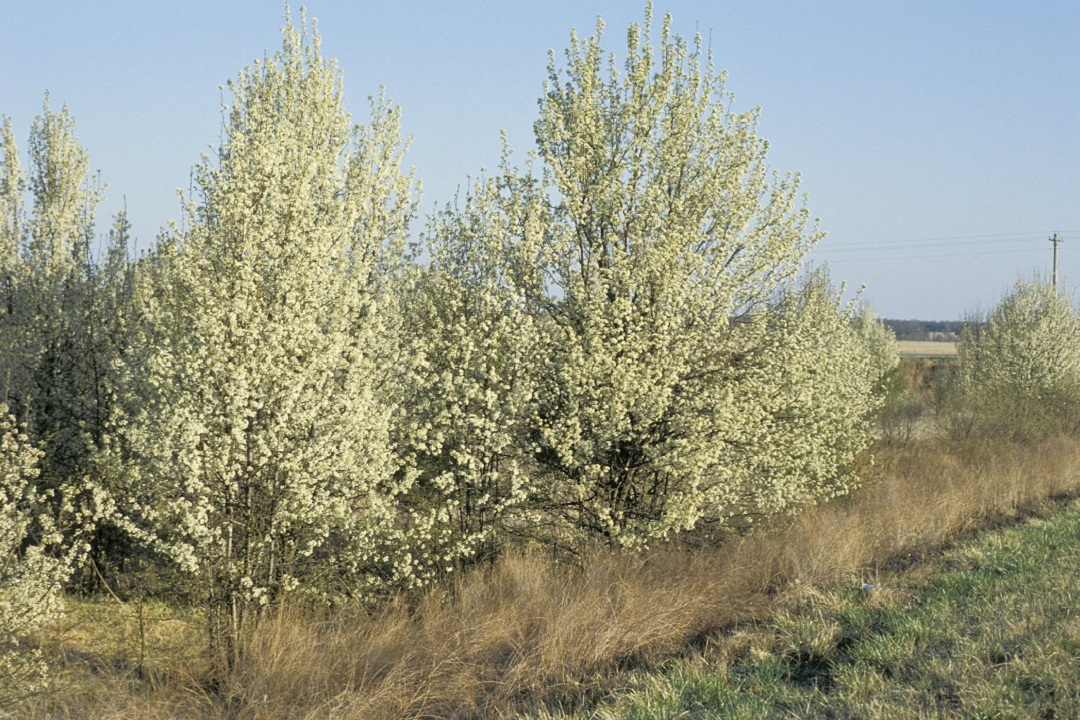Are you looking for a fast-growing tree for your yard? How about one that will shade your patio, or that has beautiful white blooms in the spring?
Well, there’s at least one tree that checks all those boxes, but it’s a wrong choice for Missouri and a wrong choice for you.
Meet the Callery pear (Pyrus calleryana). Imported to the US from China just over a century ago, the Callery pear, also known as the Bradford pear, is a fast-growing tree. That made it attractive to developers and homeowners as suburbs grew in the decades following World War II.
However, the Callery pear doesn’t just grow quickly — it spreads quickly, too. The tree can’t self-pollinate, but it can cross-pollinate with other trees. Today, the Callery pear is rampant in Missouri.
So, what’s wrong with that? Plenty.
Invasive Species
Though all organisms are part of nature, biologists and conservationists consider any non-native species that harms its new habitat to be “invasive”.
“Callery pears out-compete native plants for space and resources, limiting their ability to grow,” explained Forest ReLeaf of Missouri Forestry Manager Billy Haag. “This pushes insects out, because they no longer have the host plants they live off of. Without insects, you don’t have the diversity of wildlife. Pears affect the entire food chain.”
Plus, Callery pears’ branch structure is not suited for Missouri’s winters or strong spring storms. As a result, they’re the bane of electric utility workers and their customers, as well as everyone else with Callery pears near their home, vehicle, or other valuable property.
And then there’s the smell. While the Callery pear’s white blooms may be a welcome sign of spring, the blooms’ odor can only be generously described as “unpleasant”.

Callery Pear flowers are pretty but emit an unpleasant smell. (Dan Zarlenga)
For all these reasons, Forest ReLeaf and its partners — the Missouri Department of Conservation (MDC) and the Missouri Invasive Plant Council (MIPC) — are working to remove Callery pear trees from Missouri’s ecosystem.
Their solution? Callery pear “buy-back” events, which provide a free native tree for each property owner providing evidence of removing at least one Callery pear from their property.
‘Buy-Back’ Program
Forest ReLeaf first partnered with MDC and MIPC in 2019 to pilot a Callery Pear buy-back program in St. Louis. After a pandemic break in 2020, the buy-back returned in 2021 with an additional community: Columbia, Missouri.
But 2022 was the program’s biggest year to date. Expanded to cover six communities across the state — St. Louis, Columbia, Kansas City, Springfield, Joplin, and Cape Girardeau — the 2022 buy back added 600 native Missouri trees to the environment while removing an even bigger number of Callery pears.
FedEx Corporation provided an additional boost for this year’s program. To support its commitment to sustainability and reducing carbon dioxide (CO2) emissions, the company donated funds that allowed Forest ReLeaf to buy trees exclusively for planting on private property. Other Forest ReLeaf programs, such as its popular Project CommuniTree planting program for community groups, plant only in public spaces like roadway medians.

Callery pear branches can easily split and break. (Tim Fox)
“All private property owners have to do is register online, take a picture of themselves with their removed Callery pear, upload the photo to MIPC’s site, and come to a dedicated community location to get their free replacement tree,” Haag said.
As native trees, the replacements do a better job than Callery pears of growing strong, healthy canopies, which increases the amount of CO2 they can capture and makes them better at controlling runoff. Plus, they are less likely to damage power lines if they’re planted in the right place.
Planting Your Tree
Before thinking about location, you first need to think about your native tree’s purpose.
“You have to consider why you’re planting that tree. What do you want it to do for you?” Haag said. “That’s why we say, ‘right purpose’ as well as ‘right tree’ and ‘right place.”
For example, Missouri’s beloved state tree, the flowering dogwood (Cornus florida), offers white spring blooms without the Callery’s bad smell. But if you’re looking for a big shade tree, it’s not a good choice. It tops out at around 40 feet. A better choice for shade might be the bur oak (Quercus macrocarpa), which can grow twice as high.
If quicker growth — in tree time, anyway — is your goal, consider varieties of maple, like the red maple (Acer rubrum) or the silver maple (Acer saccharinum). The tulip tree (Liriodendron tulipifera) is also a fast grower, but like the Callery pear, its wood can be weak.
Then, consider your location.
“Trees are a long-term investment,” said Haag. “Look up and around where you’re planting it. Underneath a power line is not the best place for a bur oak, for example.”
Education and Impact
For Forest ReLeaf Executive Director Meredith McAvoy Perkins, another great benefit of the Callery buy-back program is the power it puts in tree consumers’ hands.
“We want to educate people about all aspects of planting different trees,” Perkins said. “Trees have a compounding impact on their environments, for better or for worse. Tree buy-backs empower people to take individual action and make a positive difference on their own landscapes.”
More Tree Tips
To find more information about invasive species and planting native trees, visit Forest ReLeaf of Missouri (moreleaf.org), Missouri Department of Conservation (mdc.gov), and Missouri Invasive Plant Council (moinvasives.org). Missouri Botanical Garden (missouribotanicalgarden.org) is also a great resource.
Author: Tim Fox is a contributor to Terrain Magazine.


Leave A Comment